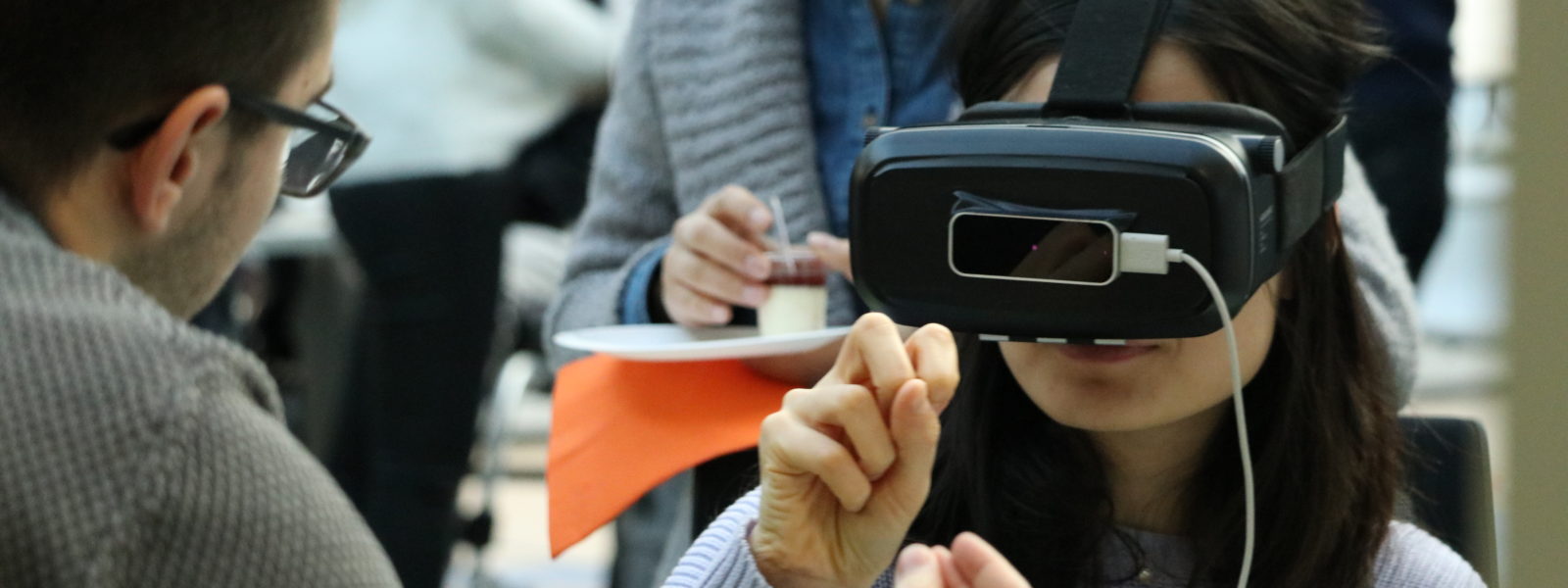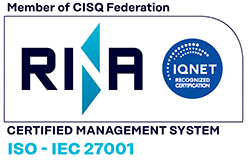Industry of the future
The realization of the Industry of the Future for FBK will be achieved thanks to the full application of Artificial Intelligence. The advancement of technologies and high availability of data will enable the improvement and optimization of machines, factories, and industrial processes in terms of quality, efficiency, safety, cost-effectiveness, and workers’ welfare. In particular, FBK’s Center for Digital Industry focuses its research on digital technologies for various industry sectors (e.g., manufacturing, aerospace, rail, automotive, energy, agriculture, production, etc.), with the goal of achieving levels of scientific excellence and high industrial impact in specific areas such as:
- flexible process control
- critical systems
- autonomous robotics
- quality control
- predictive maintenance
- metrolgy
Specifically, the Center for Digital Industry takes an approach that is strongly oriented towards technology transfer and the integration into research of topics arising from interaction with businesses, contributing to the development and dissemination of the most advanced technologies at the industrial level. In addition, the Center offers different types of services to SMEs under three initiatives co-funded by the European Commission and the Ministry of Enterprise and Made in Italy (MIMIT) with the aim of bringing AI to market and accelerating innovation. Further information on the services offered by the Center for Digital Industry is available here. Among the projects highlighted below are two of the aforementioned initiatives, i.e., AI-MATTERS and InnovAction.
Strenghts
The basic principle for a successful implementation of the Industry of the Future is, for FBK, “solving problems with science” which allows the development of innovative solutions based on the technological transfer of research results. In particular, research develops integrated, interdisciplinary, domain-independent solutions pushed by the latest challenges of Artificial Intelligence (Integrative AI, AI at the Edge and Certified AI).
Technology and related fields of application
- FBK Model-Based Design Analysis tools
They support a variety of formal method-based features such as model checking, SMT solving, fault injection e model-based safety analysis, contract-based design and semantica validation of the requirements. - Model-Based Testing for parametric and configurable systems
FBK supports the testing phase of software systems characterized by high variability in the space of possible functional configurations and release architectures. The goal is to explore new approaches to the automated generation of test cases by exploiting the joint use of model-based techniques and AI. - V-SLAM
Video sequences are processed automatically and in real time to derive the positioning and 3D mapping of the scene shot, in industrial contexts and in other fields. - Visual learning
Machine learning techniques for image segmentation, object and pattern classification, with applications in robotics and quality control in complex scenarios. - FBK reasoning tools for autonomous systems
They integrated symbolic and data analysis techniques to support adaptive control, including monitoring and planning capabilities. - AI for 3D Heritage
FBK has developed 3D classification methods, based on machine learning, for the semantic enrichment of 3D cultural heritage data. The AI solutions for semantic enrichment are transferable to other sectors. - Model-Based Testing for extended reality based systems
FBK supports the testing phase for extended reality-based systems using AI-based test agents that allow to automatically explore and test the virtual world. - FBK Model-Based Software Engineering for Safety-Critical Control Systems
FBK provides several tools to specify complex control software and to synthesize embedded code with high assurance for safety-critical domains. - Augmented reality
The ability to consistently insert relevant information into the scene has enormous potential in industrial applications and in human-machine interactions. - Scene understanding techniques
Analysis of video scenes with the aim of determining the elements of interest within them and their space-time relationship - Automatic techniques for speech translation and subtitling
FBK provides AI-based tools that provides a textual translation of speech and subtitles compliant with market demands and useful for professional subtitles
Main Projects
AI-MATTERS
FBK’s Center for Digital Industry participates as a partner in the AI-MATTERS project, which is co-funded by the European Commission and at the national level by the member states participating in the consortium, as part of the European funding program called Digital Europe. AI-MATTERS provides a network of Testing & Experimentation Facilities (T&E) at the European level with the aim of supporting companies working in AI and robotics for the manufacturing sector in testing and validating their solutions.
The consortium, coordinated by CEA List (FR), is structured into several nodes grouping the 24 different partners belonging to 8 different Member States, namely France, Germany, Denmark, the Netherlands, the Czech Republic, Spain, Italy, and the satellite Greece.
The Italian node, coordinated by MADE 4.0, the national competence center for manufacturing, includes FBK and the company REPLY, which provides consulting, systems integration and digital services. Specifically, FBK provides its expertise in the field of Artificial Intelligence for interested companies through various testing and experimentation services. The services offered by the Center for Digital Industry as part of the AI-MATTERS project are available in the dedicated catalog. For more information on how to access the services, please see the dedicated page.
InnovAction
The InnovAction project, in which FBK is a partner, is a project co-funded by the Ministry of Enterprise and Made in Italy (MIMIT), which was the winner through Seal of Exellence of a 2022 Digital Europe program call for the selection of European Digital Innovation Hubs (EDIHs). The project, coordinated by Cefriel, in fact aims to support the digital and green transformation, the so-called Twin Transition (TT), of companies, improving their business, production processes, products or services and becoming more competitive.
The consortium, made up of five nationwide partners, namely Cefriel, FBK, Links Foundation, Intesa San Paolo, and the University of Naples Federico II, aims to support companies in their innovation process through innovation services and technical expertise and testing.
The services fall under four main categories: Test Before Invest, Networking, Access to Funding and Training services. Specifically, FBK’s Center for Digital Industry offers Test Before Invest services to small and medium-sized enterprises interested in accelerating the Twin Transition, described in detail in the catalog available here. More information on how to access InnovAction’s services can be found here.
Projects in the context of NRRP:
iNEST ecosystem
The priority line of the iNEST ecosystem falls under the “Digital, Industry, Aerospace” area of the National Research Plan (NRP).
iNEST is coordinated by the University of Padua and aims to extend the benefits of digital technologies to the main areas of specialization in the Northeast (Friuli-Venezia Giulia, Veneto and the Autonomous Provinces of Trento and Bolzano): to the industrial-manufacturing, agriculture, sea, mountain, construction, tourism, culture, health and food sectors. The interconnection of local ecosystems at the macro-region level will make it possible to work on a common “digital vision” for the benefit of the economy and citizens, with local strategies of smart specialization to be merged into a shared mission for the Northeast.
FBK participates as an affiliate of 2 Spokes (Trentino Spoke on digital health and healthcare and Udine Spoke on digital industry and cybersecurity).
ICSC Foundation
The Supercomputing Center is one of five national research centers under the National Recovery and Resilience Plan (PNRR) .Advanced by the National Institute of Nuclear Physics (INFN), the new entity can count on 51 founding members, distributed throughout the national territory, from the public and private scientific research and industry sectors.
Dedicated to high-performance computing (HPC), big data management and quantum computing, the National Supercomputing Center will be based at the Tecnopolo Bologna tech hub: a citadel of innovation promoted by the Emilia-Romagna Region, thanks in part to investments by the Italian government and the EU, which already houses the European Weather Data Center (ECMWF) and will soon host the Leonardo supercomputer managed by CINECA and the INFN Computing Center, with the aim of building a distributed, cross-domain infrastructure that will provide scientific the research and manufacturing sector with support for the innovation and digitization of the country.
Other projects:
- Projects related to the COMPASS, framework funded by ESA (European Space Agency). Projects focus on a coherent set of formal specifications and analysis techniques to support the design, development, safety and reliability assessment and implementation of complex aerospace systems.
- Projects in the railway sector.
The Digital Industry center is involved in various projects in the field of railways that aim to define new methodologies and tools for the design, development, testing, verification and validation of the railway interlocking signaling systems and control systems for autonomous trains that they must comply with strict safety standards such as EN 50128 for the design and development of railway systems. - iv4XR (EU H2020): the aim of the project is to build a new verification and validation technology for extended reality systems based on AI techniques to provide learning and reasoning on a virtual world.
- Speech translation projects in order to support professional subtitlers and interpreters with artificial intelligence with artificial intelligence (MateDUB, EuroSub, SmarTer).
- CASTORONE: the system of planning and execution of the activities necessary for the manufacture of pipes for marine oil pipelines and their laying in the sea made operational on the CastorOne ship (one of the largest pipeline laying ships in the world).
- BOEING: the system developed allows to analyze with mathematical models all the possible scenarios in the design phase and to proceed with their verification, always using automatic resolution software. In this way, traditional engineering work is supported by offering further guarantees relating to the proper operation of the systems involved in all scenarios of interest.
- ROBDT: the project aims to develop a Robotic Digital Twin framework that combines three kinds of models: data-based, physics-based and symbolic models – based; it uses online data and analytics to adapt models at runtime. The digital twin supports robotic asset operations by providing reliable timing and forecasting and supporting the what-if analysis to evaluate multiple scenarios.
- The goal of the ATO (Automatic Train Operation)project is the development of an experimental railway vehicle capable of traveling on the railway line at high speed and in full autonomy, but which can also be driven remotely, under ERTMS/ETCS supervision, systems for high-speed lines. Its long-term goals are the reduction of maintenance times and costs of railway lines, the innovation of the maintenance process by increasing the effectiveness of preventive actions, greater perceived comfort and shorter travel times.
- XLoader4.0
the project involves the integration and use of an artificial vision system capable of providing a robotic system with the spatial coordinates for handling items that undergo galvanic treatment. Thanks to the use of two anthropomorphic arms, the items to be treated are loaded onto special support frames. The Vision System has two main roles: (i) to identify the spatial installation of the frame and all the supports and (ii) to verify that the items have been correctly positioned on them. - The Veneeresult project has as its objective the evaluation of the aesthetic level of precious pieces of wood. By exploiting some modules developed in the Defectless project which, with machine learning methods applied to wood tomography, are able to determine the presence, position and severity of defects, the evaluation of quality based on the aesthetic criterion, allows an optimized use of each piece in the production process.
If you are already a subscriber of this newsletter, you can request to update your preferences or to cancel your subscription.
We've sent you an email message, which contains all details to confirm your address to complete the signup to our newsletter.
Something went wrong during this request, please try again and make sure all information is entered correctly.




